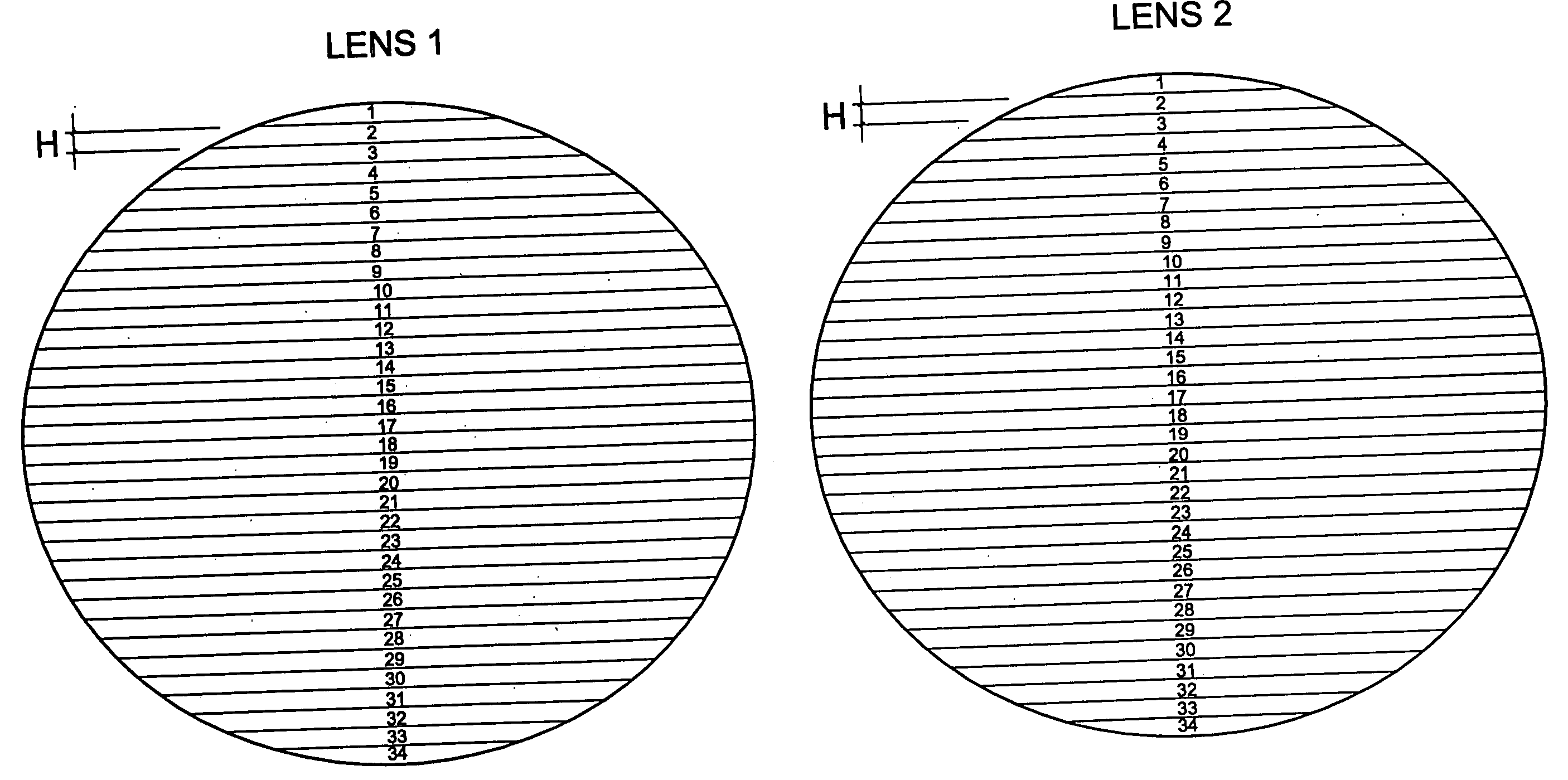Dual complementary two-color optics which enables a user to see true neutral color, with improved shading design and shadow detail
a two-color, dual-compatibility technology, applied in the field of optics, can solve problems such as the limited range of lenses
- Summary
- Abstract
- Description
- Claims
- Application Information
AI Technical Summary
Benefits of technology
Problems solved by technology
Method used
Image
Examples
Embodiment Construction
[0068] Although specific embodiments of the present invention will now be described with reference to the drawing, it should be understood that such embodiments are by way of example only and merely illustrative of but a small number of the many possible specific embodiments which can represent applications of the principles of the present invention. Various changes and modifications obvious to one skilled in the art to which the present invention pertains are deemed to be within the spirit, scope and contemplation of the present invention as further defined in the appended claims.
[0069] First, the principles upon which the present invention is based will be discussed.
[0070] The eye interprets color through the cones in the retina, which has nothing to do with visual acuity (or the ability for the eye to focus objects sharply). Then, via the optic nerve, color light is transferred to the Lateral Geniculate Body (LGB). The LGB is the “visual middleman”. It receives information from...
PUM
 Login to View More
Login to View More Abstract
Description
Claims
Application Information
 Login to View More
Login to View More - R&D
- Intellectual Property
- Life Sciences
- Materials
- Tech Scout
- Unparalleled Data Quality
- Higher Quality Content
- 60% Fewer Hallucinations
Browse by: Latest US Patents, China's latest patents, Technical Efficacy Thesaurus, Application Domain, Technology Topic, Popular Technical Reports.
© 2025 PatSnap. All rights reserved.Legal|Privacy policy|Modern Slavery Act Transparency Statement|Sitemap|About US| Contact US: help@patsnap.com


